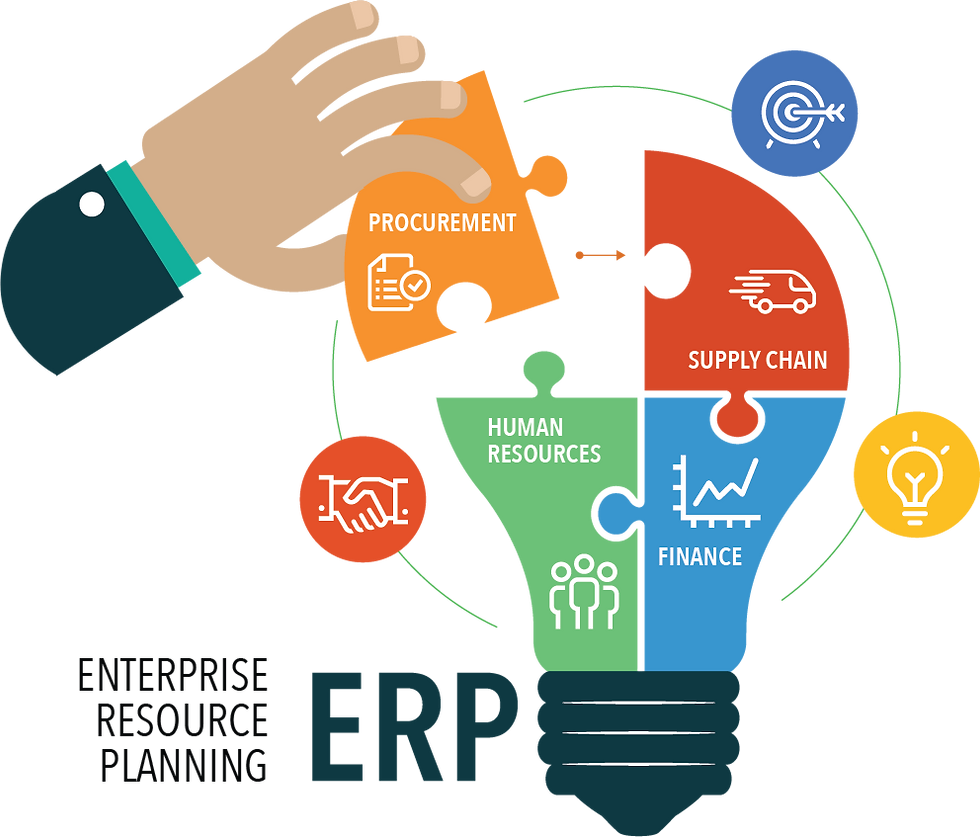Streamlining Education Management: The Role of ERP Solutions for Schools
- solutionscakiweb
- Apr 4, 2024
- 3 min read
In the ever-evolving landscape of education, schools are facing increasing pressure to adapt to modern technological advancements while ensuring seamless administrative operations. Educational institutions, from elementary schools to universities, are now turning to Enterprise Resource Planning (ERP) solutions to manage their complex administrative tasks efficiently. ERP systems, once primarily associated with large-scale enterprises, are now becoming indispensable tools for schools seeking to streamline their operations, enhance productivity, and improve overall performance. In this blog post, we delve into the significance of ERP solutions for schools and how they are revolutionizing the education sector.
Understanding ERP Solutions for Schools
ERP solutions integrate various administrative functions within a single platform, providing schools with a centralized system to manage processes such as student enrollment, academic planning, faculty management, financial management, and more. These systems offer comprehensive modules tailored to the specific needs of educational institutions, allowing for seamless coordination and communication across different departments.

Benefits of ERP Solutions for Schools
1. Efficient Data Management: ERP systems enable schools to consolidate vast amounts of data into a unified database, eliminating the need for manual data entry and reducing the likelihood of errors. Administrators can easily access and analyze information related to student records, academic performance, staff schedules, and financial transactions.
2. Streamlined Administrative Processes: With ERP solutions, routine administrative tasks such as student admissions, course registrations, and payroll processing can be automated, saving time and resources for school staff. This streamlined approach enhances operational efficiency and allows administrators to focus on strategic initiatives.
3. Improved Communication and Collaboration: ERP systems facilitate seamless communication and collaboration among teachers, students, parents, and administrative staff. Features such as online portals and messaging tools enable stakeholders to stay connected, share information, and address concerns in real-time, fostering a more engaged and supportive learning environment.
4. Enhanced Financial Management: By integrating financial modules into the ERP system, schools can efficiently manage budgets, track expenses, process payments, and generate financial reports. This level of transparency and accountability enables administrators to make informed decisions and optimize resource allocation.
5. Personalized Learning Experiences: ERP solutions can capture and analyze student data to identify individual learning needs and preferences. By leveraging this information, educators can tailor instructional content, provide targeted interventions, and monitor student progress more effectively, ultimately enhancing the quality of education.
6. Compliance and Regulatory Compliance: Educational institutions must adhere to various regulatory requirements and accreditation standards. ERP systems help schools maintain compliance by automating regulatory reporting, tracking certification processes, and ensuring adherence to data privacy laws.
7. Scalability and Flexibility: As schools grow and evolve, ERP solutions offer scalability and flexibility to adapt to changing needs and accommodate expanding student populations. Whether opening new campuses, introducing new programs, or integrating with third-party applications, ERP systems provide a robust foundation for future growth.
Implementation Challenges and Considerations
While the benefits of ERP solutions for schools are undeniable, implementing such systems can pose challenges, including:
• Initial Investment: Acquiring and implementing an ERP system requires a significant upfront investment in terms of software licenses, hardware infrastructure, and implementation costs. Schools must carefully evaluate their budgetary constraints and long-term ROI before committing to an ERP solution.
• Change Management: Introducing a new ERP system entails changes in workflows, processes, and organizational culture. Effective change management strategies, including training programs and stakeholder engagement initiatives, are essential to ensure a smooth transition and minimize resistance to change.
• Data Migration and Integration: Migrating existing data from legacy systems to the new ERP platform and integrating with third-party applications can be complex and time-consuming. Schools must plan meticulously and enlist the support of experienced IT professionals to navigate these challenges successfully.
• Security and Data Privacy: With the increasing digitization of educational data, schools must prioritize cybersecurity and data privacy measures to protect sensitive information from unauthorized access or breaches. Implementing robust security protocols and compliance measures is crucial to safeguarding student and staff data.
Conclusion
In an era defined by technological innovation and digital transformation, ERP solutions are revolutionizing the way schools manage their administrative operations and deliver educational services. By centralizing data, automating processes, and fostering collaboration, ERP systems empower educational institutions to enhance efficiency, improve decision-making, and provide personalized learning experiences for students. While implementing ERP solutions may present challenges, the long-term benefits far outweigh the initial investments, positioning schools for success in the digital age of education. As schools continue to embrace ERP solutions, they are poised to redefine the future of education and unlock new opportunities for growth and innovation.Learn more



Comments